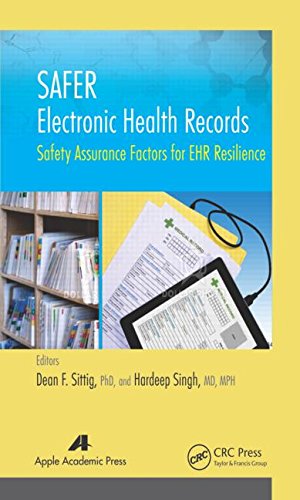

Most ebook files are in PDF format, so you can easily read them using various software such as Foxit Reader or directly on the Google Chrome browser.
Some ebook files are released by publishers in other formats such as .awz, .mobi, .epub, .fb2, etc. You may need to install specific software to read these formats on mobile/PC, such as Calibre.
Please read the tutorial at this link: https://ebookbell.com/faq
We offer FREE conversion to the popular formats you request; however, this may take some time. Therefore, right after payment, please email us, and we will try to provide the service as quickly as possible.
For some exceptional file formats or broken links (if any), please refrain from opening any disputes. Instead, email us first, and we will try to assist within a maximum of 6 hours.
EbookBell Team

4.3
38 reviewsThis important volume provide a one-stop resource on the SAFER Guides along with the guides themselves and information on their use, development, and evaluation. The Safety Assurance Factors for EHR Resilience (SAFER) guides, developed by the editors of this book, identify recommended practices to optimize the safety and safe use of electronic health records (EHRs). These guides are designed to help organizations self-assess the safety and effectiveness of their EHR implementations, identify specific areas of vulnerability, and change their cultures and practices to mitigate risks.
This book provides EHR designers, developers, implementers, users, and policymakers with the requisite historical context, clinical informatics knowledge, and real-world, practical guidance to enable them to utilize the SAFER Guides to proactively assess the safety and effectiveness of their electronic health records EHR implementations.
The first five chapters are designed to provide readers with the conceptual knowledge required to understand why and how the guides were developed. The next nine chapters focus on the underlying informatics concepts, key research activities, and methods used to develop each of the guides. Each of these chapters concludes with a copy of the guide itself. The final chapter provides a vision for the future and the work required to ensure that future generations of EHRs are designed, developed, implemented, and used to improve the overall safety of the EHR-enabled healthcare system.
Taken together, the information provided in this book should help any organization, whether large or small, implement its EHR program and improve the safety and effectiveness of its existing EHR-enabled healthcare systems.
This volume will be extremely valuable to small, ambulatory physician practices and larger outpatient settings as well as for hospitals and professors and instructors charged with teaching safe and effective implementation and use of EHRs. It will also be highly useful for health information technology professionals responsible for maintaining a safe and effective EHR and for clinical and administrative staff working in EHR-enabled healthcare systems.